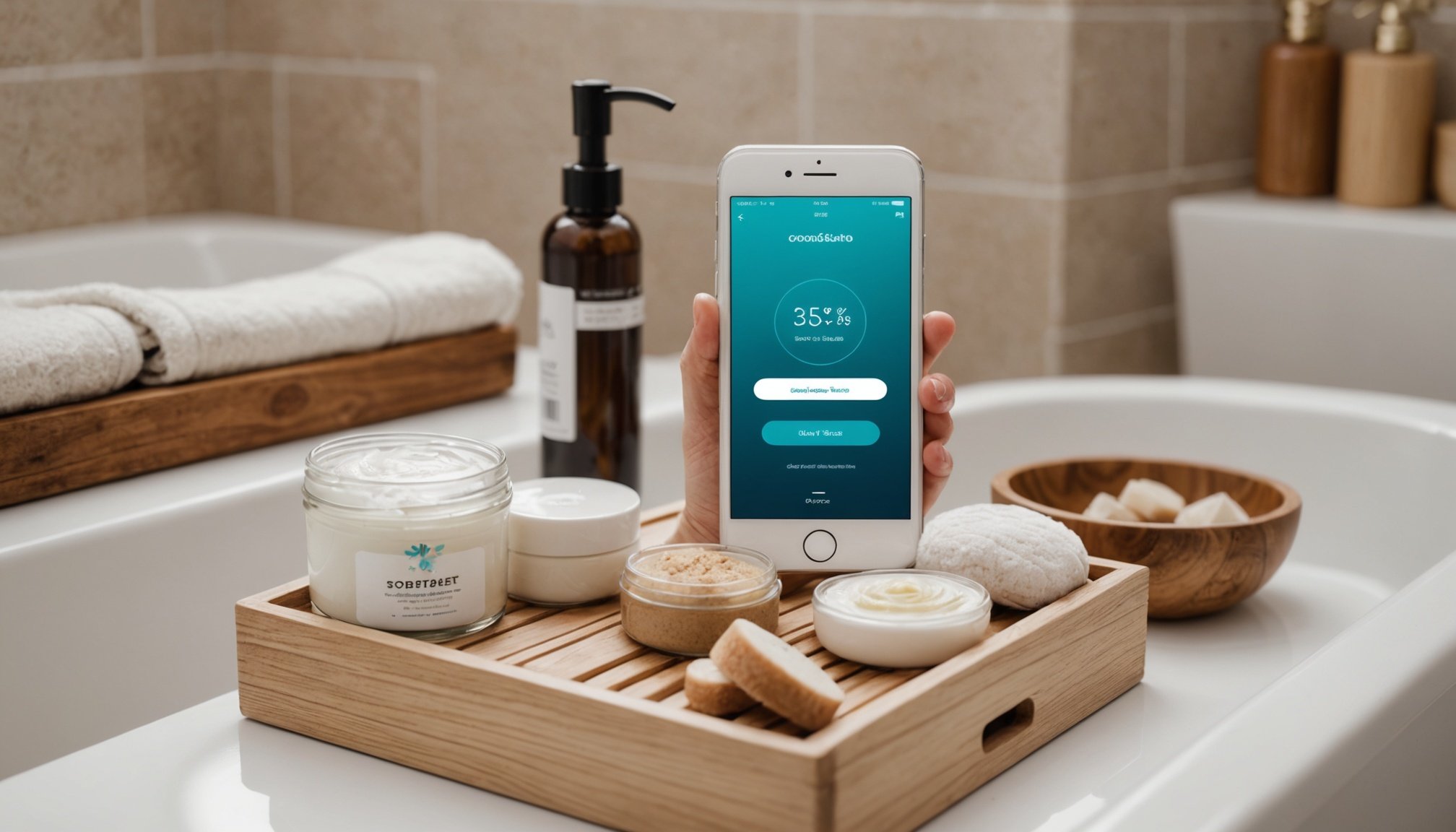Unlocking Success: Key Strategies for Designing a Mobile-Friendly E-commerce Store for Your Bath Products Brand
In the ever-evolving landscape of e-commerce, ensuring your online store is mobile-friendly is no longer a luxury, but a necessity. With the majority of users accessing websites through their mobile devices, a well-designed mobile-friendly store can significantly boost your sales, enhance user experience, and drive customer satisfaction. Here’s a comprehensive guide on how to design a mobile-friendly e-commerce store for your bath products brand.
Understanding Your Customer and Their Needs
Before diving into the technical aspects of designing a mobile-friendly store, it’s crucial to understand your customer and their needs. Your customers are the backbone of your business, and their satisfaction is key to your success.
Also to discover : Enhancing workplace efficiency: proven techniques for thriving in manchester offices
Identifying Your Target Audience
To create an effective mobile-friendly store, you need to know who your target audience is. Are they busy professionals looking for quick and easy shopping experiences, or are they parents seeking natural and safe bath products for their children? Understanding their demographics, preferences, and shopping habits will help you tailor your store to meet their specific needs.
- Age and gender
- Location and lifestyle
- Shopping habits and preferences
- Pain points and expectations
For example, if your target audience is young parents, you might focus on creating a user-friendly interface that allows them to quickly find and purchase products, even with one hand while managing their children.
Have you seen this : Ultimate playbook for designing a high-impact customer onboarding experience for your nottingham e-commerce business
Optimizing Your Website for Mobile
A mobile-friendly website is not just about resizing your desktop site to fit a smaller screen; it’s about creating an entirely new user experience that is tailored for mobile users.
Responsive Design
A responsive design ensures that your website adapts to the screen size of the device it is being viewed on. This means that whether your customer is using a smartphone, tablet, or desktop, your website will look and function perfectly.
- Use flexible grids and images
- Use media queries to apply different styles based on screen size
- Ensure all elements are easily accessible and clickable
Simplifying Navigation and Checkout
The navigation and checkout process on a mobile device should be as streamlined as possible. Here are some best practices to follow:
- Minimize the number of steps in the checkout process
- Use auto-fill options for forms
- Provide clear and concise product information
- Ensure the 'Add to Cart' and 'Checkout' buttons are prominent and easily accessible
For instance, France Boissons, a Heineken subsidiary, significantly improved their checkout process by using AB testing and user behavior analysis. They found that simplifying their search bar and optimizing the checkout process led to a substantial increase in conversions[1].
Enhancing User Experience
The user experience is paramount when it comes to e-commerce. Here are some strategies to enhance it on your mobile-friendly store.
Personalization
Personalization can make a significant difference in the shopping experience. Here are a few ways to personalize your store:
- Offer personalized product recommendations based on user behavior and preferences
- Use AI to suggest related products during the checkout process
- Create a virtual try-on feature for products like bath bombs or skincare sets
Taelor, a men’s clothing rental service, combines automation with human stylists to provide personalized boxes that match each customer’s style and needs. This approach can be adapted to bath products by offering personalized skincare routines or bath sets based on user preferences[2].
High-Quality Content and Images
High-quality content and images are essential for any e-commerce store. Here’s how you can optimize them for mobile:
- Use high-resolution images that load quickly
- Ensure product descriptions are concise and easily readable on mobile devices
- Use videos to demonstrate product usage and benefits
For example, if you are selling bath bombs, a short video showing how they dissolve in water and the colors they create can be very engaging and informative.
Leveraging Social Media and Marketing
Social media and marketing play a crucial role in driving traffic to your online store and enhancing customer engagement.
Social Media Integration
Social media is a powerful tool for engaging with your customers and promoting your products.
- Share product demos and tutorials
- Engage with customers through comments and direct messages
- Run targeted ads to reach your target audience
Charles Vignon, a brand selling organic cereals, uses Instagram to engage with their customers directly. They respond to comments and create a personalized experience, making customers feel valued and unique[4].
Email Marketing
Email marketing is another effective way to keep your customers engaged and informed about new products, promotions, and events.
- Send regular newsletters with exclusive offers and new product launches
- Use segmentation to send personalized emails based on user behavior
- Include clear calls-to-action to drive traffic to your website
For instance, Harry’s, a razor company, used email marketing to encourage customers to share a pre-launch link on social media, turning them into brand ambassadors and driving significant engagement[4].
Analyzing and Improving Performance
Continuous improvement is key to maintaining a successful e-commerce store.
Using Analytics Tools
Analytics tools can provide valuable insights into user behavior and help you identify areas for improvement.
- Use tools like Google Analytics to track user behavior and conversion rates
- Analyze search queries and user feedback to improve the search function
- Conduct A/B testing to optimize different elements of your website
France Boissons used tools like New Relic, SemRush, and Contentsquare to analyze user behavior and improve their website’s performance. They found that improving the search bar and optimizing the checkout process significantly increased their conversion rates[1].
Table: Best Practices for a Mobile-Friendly E-commerce Store
| Aspect | Best Practices |
|---|---|
| Responsive Design | Use flexible grids and images, media queries for different screen sizes |
| Navigation | Simplify navigation, ensure easy access to key pages |
| Checkout Process | Minimize steps, use auto-fill options, clear and concise product information |
| Personalization | Offer personalized product recommendations, use AI for related products |
| Content and Images | High-resolution images, concise product descriptions, use videos |
| Social Media | Engage with customers, share product demos, run targeted ads |
| Email Marketing | Send regular newsletters, use segmentation, include clear calls-to-action |
| Analytics | Use tools like Google Analytics, analyze search queries and user feedback |
| A/B Testing | Conduct regular A/B testing to optimize website elements |
Designing a mobile-friendly e-commerce store for your bath products brand is a multifaceted task that requires a deep understanding of your customers, a well-optimized website, and effective marketing strategies. By focusing on responsive design, simplifying navigation and checkout, enhancing user experience through personalization, leveraging social media and marketing, and continuously analyzing and improving performance, you can create a store that not only attracts but also retains customers.
As Edouard Chevallot from France Boissons aptly put it, “We wanted to maximize the potential of each tool and have real complementarity, not just satellite tools. Each tool has its own interest, but it must be interconnected with the others.”[1]
By following these strategies and best practices, you can unlock the full potential of your e-commerce store, drive customer satisfaction, and ultimately, boost your sales and business growth.











